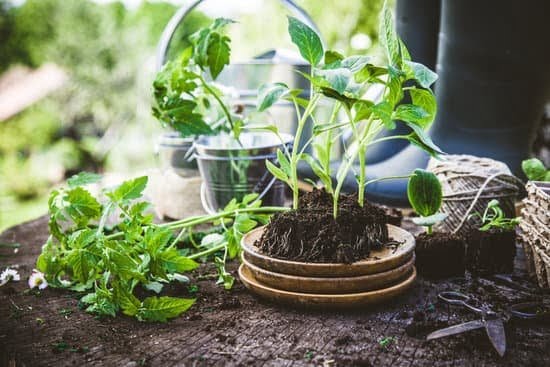Are you looking to enhance the aesthetic appeal and functionality of your garden? If so, you have come to the right place.
In this article, we will explore the importance of fencing for gardens and provide you with a comprehensive guide on different types of materials, styles, considerations, DIY ideas, professional installation, maintenance tips, and decorative elements to enhance your garden fencing. Whether you are looking for traditional, contemporary, or rustic options, we have got you covered with the best fencing for gardens ideas.
Fencing plays a crucial role in defining the boundaries of your garden while also providing security and privacy. Additionally, it can add a decorative element to your outdoor space and complement the overall design of your garden. With various materials such as wood, vinyl, metal, and more to choose from, it’s important to consider factors such as height, privacy needs, and aesthetics before making a decision.
From DIY solutions for creative and cost-effective garden fencing to the benefits of professional installation and factors to consider when choosing the right option for your space – this article will cover it all. We will also discuss tips for maintaining and upkeeping garden fencing to ensure longevity and durability. Whether you are a gardening enthusiast or someone looking to revamp their outdoor space, our guide will help you find the best fencing ideas for your unique needs.
Types of Fencing Materials for Gardens
When it comes to choosing the right fencing for your garden, the type of material used is a crucial decision. Each material has its own unique qualities and benefits, so it’s important to consider factors such as durability, maintenance, and aesthetic appeal.
Wood fencing remains a popular choice for garden enclosures due to its natural look and versatility. Cedar and redwood are popular choices for their resistance to decay and insects, making them long-lasting options for garden fencing. However, wood fencing does require regular maintenance such as staining or painting to protect it from the elements.
Vinyl fencing is a low-maintenance option that can mimic the look of wood without the need for upkeep. It is durable and resistant to rotting, peeling, or warping, making it a practical choice for garden enclosures. Additionally, vinyl fencing is available in a variety of colors and styles, offering homeowners plenty of design options.
Metal fencing, such as wrought iron or aluminum, provides a classic and elegant look to garden spaces. While more expensive than wood or vinyl options, metal fencing is incredibly durable and adds a touch of sophistication to any outdoor area. It requires minimal maintenance and can be customized with decorative elements to add charm to your garden.
In addition to these common materials, there are also alternative options such as bamboo or composite fencing that offer unique looks and eco-friendly benefits. When selecting the right material for your garden fencing, it’s important to weigh the pros and cons of each option based on your specific needs and preferences.
Fencing Styles for Gardens
When it comes to choosing the right fencing for your garden, the style of the fence is an important consideration. The style of a garden fence can have a significant impact on the overall aesthetic of your outdoor space. From traditional to contemporary and rustic options, there are various styles to choose from that can complement different types of gardens and landscaping.
Traditional Garden Fencing
Traditional garden fencing often includes options such as picket fences, lattice fences, or classic wooden panel fences. These timeless designs add charm and character to any garden space. Picket fences are particularly popular for creating a quaint and inviting look, while lattice fences offer a more decorative touch. Traditional wooden panel fences provide privacy and security while maintaining a classic appeal.
Contemporary Garden Fencing
For a sleek and modern look, contemporary garden fencing options such as horizontal slat fences or minimalist metal designs are ideal choices. Horizontal slat fences create clean lines and a streamlined appearance, making them perfect for a more modern landscape design. Metal fencing, such as aluminum or steel, can also be used to achieve a contemporary look while providing durability and low maintenance.
Rustic Garden Fencing
Rustic garden fencing embraces natural materials and earthy textures to create a warm and inviting atmosphere. Options such as split rail fences, woven willow fences, or rough-hewn wood designs are great choices for achieving a charming rustic look in your garden. These types of fencing blend seamlessly with natural surroundings and can complement cottage-style gardens or rural landscapes beautifully.
No matter your personal preference or the style of your garden, there are plenty of options when it comes to choosing the right fencing style. When considering the style of your garden fence, think about how it will enhance the overall look of your outdoor space while also providing practical benefits such as privacy and security.
Considerations for Choosing the Right Garden Fencing
When it comes to choosing the right garden fencing, there are several important considerations to keep in mind. The height of your fence will play a crucial role in its functionality and aesthetics.
For example, taller fences provide more privacy and security, while shorter fences may be more appropriate for decorative purposes or for delineating different areas within your garden. It’s important to consider the specific needs of your outdoor space when deciding on the height of your garden fencing.
In addition to height, privacy is another key factor to consider when choosing garden fencing. If privacy is a priority for you, selecting a fencing style with minimal gaps between panels or slats can help ensure maximum seclusion for your outdoor space. On the other hand, if maintaining an open and airy feel in your garden is important to you, options with more spacing between components can be a better fit.
Aesthetics also play a significant role in choosing the right garden fencing. It’s essential that your fence complements the overall design of your garden and outdoor space. For a traditional look, consider classic wood or picket fences.
Conversely, modern gardens may benefit from sleek metal or vinyl fencing options. Rustic gardens can be enhanced with weathered wood or natural materials such as bamboo. Ultimately, selecting the right aesthetic for your garden fencing will help tie together the overall look and feel of your outdoor oasis.
- Consider the specific needs of your outdoor space when determining the height of your garden fencing.
- Choose a style with minimal gaps between panels or slats for increased privacy.
- Ensure that the aesthetic of your chosen fence complements the overall design of your garden.
DIY Garden Fencing Ideas
Are you looking to add a personal touch to your garden fencing while staying within budget? DIY garden fencing ideas provide creative and cost-effective solutions for homeowners who want to customize their outdoor spaces. By putting in some effort and creativity, you can enhance the look of your garden while keeping pests out and protecting your plants. Here are some innovative DIY garden fencing ideas that you can consider for your outdoor space.
Upcycled Materials
One of the most cost-effective ways to create a unique garden fence is to use upcycled materials. You can repurpose old pallets, wooden crates, or even discarded doors and windows to create a charming and rustic fence for your garden. Not only does this option save money, but it also gives new life to these materials and reduces waste.
Living Fences
For a more natural and eco-friendly approach, consider creating a living fence using shrubs, hedges, or bamboo. This not only adds an extra layer of privacy and security to your garden but also provides a habitat for wildlife. Additionally, living fences can be low-maintenance and can enhance the overall aesthetic of your outdoor space.
Vertical Gardens
If you have limited space in your garden, vertical gardens can serve as both a decorative element and a functional fence. By installing trellises or hanging planters on the fence, you can unleash your creativity in arranging various types of climbing plants and flowers. This not only adds visual interest to the fencing but also maximizes the greenery in your garden.
These DIY garden fencing ideas offer unique solutions that reflect your personality and style while adding character to your outdoor space. Whether it’s incorporating upcycled materials, creating living fences, or implementing vertical gardens, these cost-effective options allow you to achieve a personalized look without breaking the bank. So roll up your sleeves and get ready to transform your ordinary garden into an extraordinary one with these inventive DIY fencing ideas.
Professional Installation of Garden Fencing
When it comes to installing garden fencing, there are several benefits to opting for professional installation. Professional installers have the expertise and experience to ensure that the fencing is properly installed, providing a secure and long-lasting solution for your outdoor space. They can also offer valuable advice on the best type of fencing material and style that will suit your garden’s specific needs.
One of the key benefits of professional installation is the guarantee of quality workmanship. With their knowledge and skills, professional installers can ensure that the fencing is structurally sound and meets all necessary safety standards. Additionally, they can handle any challenges that may arise during the installation process, such as uneven terrain or existing landscaping features.
Factors to consider when choosing a professional installer for your garden fencing include their reputation and experience in the industry, as well as their portfolio of past projects. It’s important to research different installers and obtain quotes from multiple sources to ensure that you are getting the best value for your investment. Additionally, consider seeking recommendations from friends or neighbors who have had garden fencing installed professionally.
In summary, while DIY garden fencing ideas can be appealing, enlisting the help of a professional installer can offer numerous benefits, including quality workmanship and peace of mind. By considering factors such as reputation, experience, and cost, you can find a professional installer who will help bring your garden fencing ideas to life.
| Benefit | Factor |
|---|---|
| Quality workmanship | Reputation |
| Expertise | Experience |
| Safety standards | Cost |
Maintaining and Upkeeping Garden Fencing
When it comes to maintaining and upkeeping your garden fencing, there are several tips that can help ensure its longevity and durability. Proper maintenance is essential for keeping your fencing in good condition and preventing costly repairs or replacements. Here are some tips for maintaining and upkeeping your garden fencing:
1. Regular Cleaning: Regularly clean your garden fencing to remove any dirt, grime, or mold that may have accumulated. Use a mild detergent and water to clean the surface of the fencing, and consider using a power washer for tougher stains or buildup.
2. Inspect for Damage: Routinely inspect your garden fencing for any signs of damage, such as loose boards, rusting metal, or rotting wood. Addressing these issues promptly can prevent them from becoming more severe and costly to repair.
3. Apply Protective Coatings: Depending on the material of your garden fencing, consider applying protective coatings to help prevent weathering, rust, or decay. For example, wooden fences can benefit from a fresh coat of paint or sealant every few years to protect against moisture and UV damage.
4. Trim Vegetation: Overgrown plants and vines can cause damage to your fence by putting pressure on the structure or trapping moisture against the material. Regularly trim back vegetation around your garden fencing to prevent this from happening.
5. Professional Maintenance: Consider hiring a professional for routine maintenance tasks such as repairing loose components, reinforcing weak areas, or treating the fencing with specialized products for long-term durability.
By following these tips for maintaining and upkeeping your garden fencing, you can ensure that it remains in excellent condition for years to come. Taking care of your garden fencing not only enhances the appearance of your outdoor space but also protects it from potential damage caused by neglect or environmental factors.
Enhancing Garden Fencing With Decorative Elements
When it comes to enhancing the look of your garden fencing, decorative elements such as trellises, planters, and lighting can make a huge difference. These additions not only add aesthetic appeal to your outdoor space but also provide functional benefits.
Trellises are a great way to add depth and dimension to your garden fencing. They can support climbing plants and vines, adding a touch of natural beauty to your fence. Additionally, they can provide privacy and shade depending on the type of foliage you choose to grow on them.
Planters are another fantastic way to enhance your garden fencing. By attaching planters to your fence, you can create a vertical garden that adds color and texture to the area. You can plant flowers, herbs, or even small shrubs in these planters, creating a lush and inviting environment.
Lastly, consider adding lighting to your garden fencing for both aesthetic and practical purposes. String lights or lanterns can be hung along the fence to create a warm and inviting atmosphere for evening gatherings or simply enjoying your outdoor space after dark.
Incorporating these decorative elements into your garden fencing will not only enhance the overall look of your outdoor space but also provide additional functionality that you can enjoy year-round.
| Decorative Element | Benefits |
|---|---|
| Trellises | Support climbing plants; Add privacy; Provide shade |
| Planters | Create a vertical garden; Add color and texture; Lush environment |
| Lighting | Create warm atmosphere; Practical for evening gatherings |
Conclusion
In conclusion, finding the right fencing for your garden is an important aspect of creating a beautiful and functional outdoor space. Whether you choose wood, vinyl, metal, or another material, the type of fencing you select will have a significant impact on the overall look and feel of your garden. Considering factors such as height, privacy, and aesthetics will help you make an informed decision about which type of fencing will best suit your needs.
When it comes to DIY garden fencing ideas, there are numerous creative and cost-effective solutions available. From repurposing materials to creating your own unique designs, the possibilities are endless. However, if you prefer a professional installation, there are many benefits to hiring a professional to ensure a high-quality result that meets all your requirements.
Maintaining and upkeeping your garden fencing is crucial for its longevity and durability. Regular inspections and proper care will help prolong the life of your fence and keep it looking great for years to come.
Additionally, enhancing your garden fencing with decorative elements such as trellises, planters, and lighting can elevate the visual appeal of your outdoor space. Overall, by considering all these factors in choosing and maintaining garden fencing, you can create a beautiful and functional outdoor space that perfectly suits your needs.
Frequently Asked Questions
What’s the Cheapest Way to Fence in a Garden?
The cheapest way to fence in a garden is typically by using chicken wire or welded wire fencing. These materials are cost-effective and easy to install, making them a popular choice for those on a budget.
What Type of Fencing Is Best for Gardens?
For gardens, the best type of fencing is often one that allows for visibility while still providing protection. This could include picket fences, split rail fences, or even decorative metal fencing. It ultimately depends on the specific needs and aesthetic preferences of the gardener.
What Is the Cheapest Option for Fencing?
When it comes to finding the cheapest option for fencing, materials such as chain-link fencing or PVC/vinyl fencing are often the most affordable choices. Additionally, opting for a DIY installation can help save on labor costs, making it an even more budget-friendly option.

Welcome to my gardening blog! I am passionate about plants and enjoy sharing my knowledge and experiences with others. In this blog, I will write about everything related to gardening, from tips on how to get started to updates on my own garden projects.





